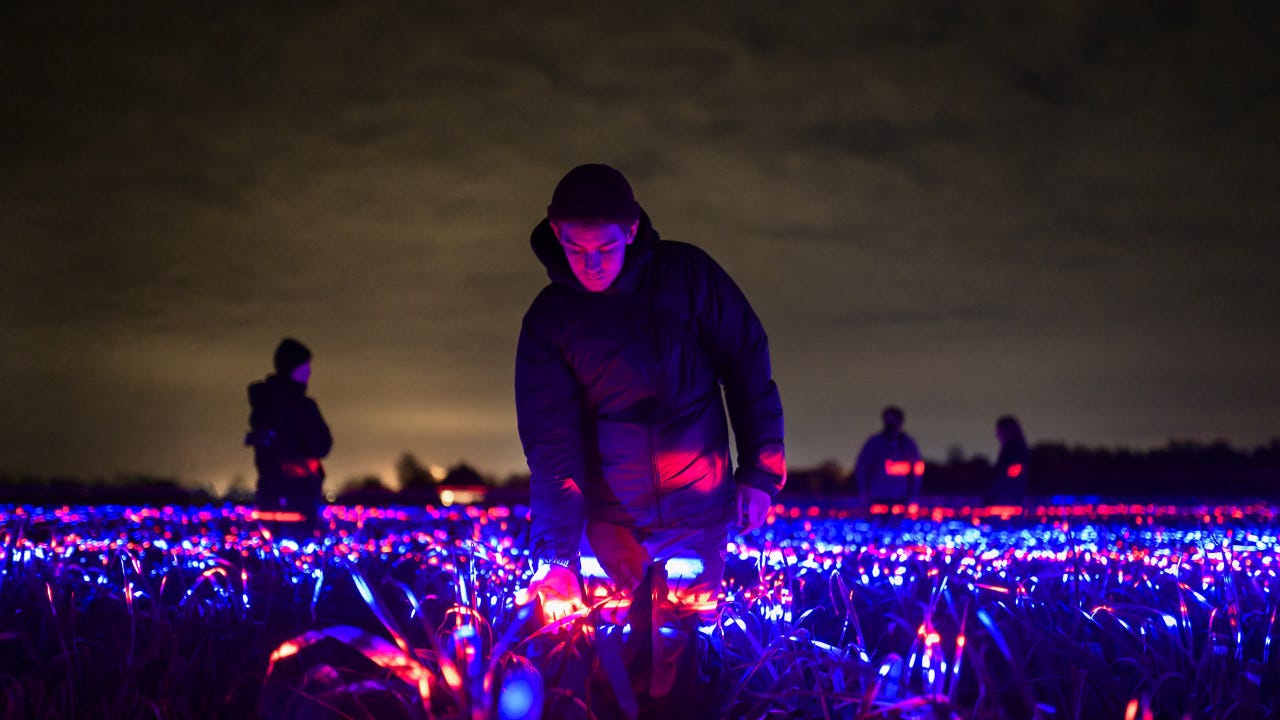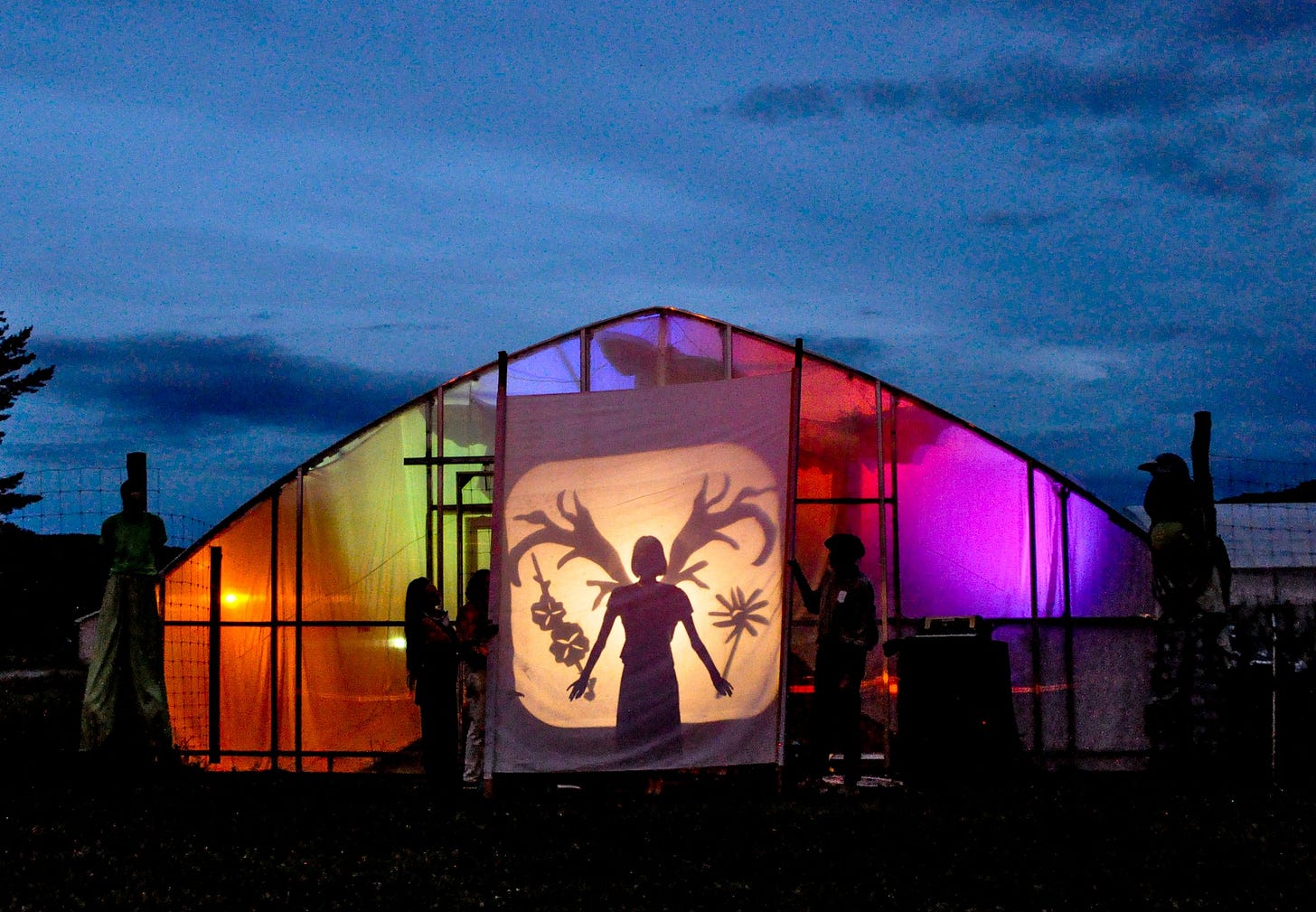Empire of Dirt (#75)
How can #SciArt help us to better understand and appreciate the harvest?
Wiping my hands,
smearing dirt on my pants, I rise
Like seedlings I hope
Like I hope
Like hopeSurrounding suburbia in southern New Brunswick are wide expanses of green and gold, all of which are preparing now for a final flourish. In spite of a soggy summer, local farm stands explode with colour and quantity, ready for our purchase and consumption.
It is a simple act to pick up a vegetable and put it in a shopping cart - and while, yes, we know it takes hard work to create this bounty from the earth (especially for those of us whose green thumbs are faded or absent completely of pigment), do we really understand?
Do we truly grasp the sheer graft and volume of knowledge needed to take dirt - a blanket term for what can be wildly different mixtures of organic and inorganic materials - and make it hospitable for tiny granules loaded with potential energy? To know what the soil is composed of, what it needs, what it will drink up with gratitude, and in turn produce tiny green shoots that are precursors to towering stalks loaded heavy with vegetable and fruit?
And then, what about the animals; the creatures that are raised - hopefully - with care for their quality of life, to then be sacrificed of their energy so that we may walk and laugh and think and dance?
For us to know is to appreciate what they know, and by extension, to truly appreciate the box of vegetables and fruits or the hunks of meat waiting in the grocery store or farm stand. It has become too easy to forget the science, the technology, the innovation, that go into creating a carrot or a cow, and creating a harvest of plant or meat can seem like alchemy to the uninitiated.1

As I sip coffee and look out my kitchen window to yet another rainy scene, I focus on the garden that yielded very little this year. Aside from the lavender harvest early in the season, beets and beans never grew an inch. Lettuce took forever to produce a bitter yield. Squash flowered all summer, but never produced the fruit due to lack of pollinators. Carrot tops are visible, but if I were to go and pull the fiery roots from the soil, I don’t imagine I’ll be greeted with much.
On a drier day, hopefully soon, I’ll go out and do a final weed - a chore that I barely kept up with this past season, as days were either wet or dangerously hot. The few nice days were chosen instead for hikes and visits to the beach. I’m mindful that that’s a choice I can make, a privileged one at that.
With the weeds then removed, I’ll add some corrections to the soil for having nitrogen-thieving plants in the beds all year. I’ll add more soil, and maybe some straw to cover the beds. I’ll snip back the lavender. I’ll think about adding spring bulbs or splitting and moving overgrown plants to make for a more enticing arrangement.
I’ll try to play scientist and artist.

Bridges into farming worlds so that we may better understand seem limited, at first blush.
When I first considered farming science and art, my mind - and an initial Internet search - yielded the typical Western/colonial depictions of traditional farming practice: antiquated tableaux and muted colour schemes; people scattered like seeds across fields armed hoes and rakes; workers spearing hay atop wagons already resplendent with gold, or gathering produce by hand.
It’s not to say that those things don’t still happen, and there’s still science and technology at play in those scenes (as low-tech as it may appear to be), but there’s also more advanced realities happening, too. There’s a contemporary understanding of farming that can be better bridged through modern fine art, installation, and performance.

To engage in the harvest is to gather nurturing things and benefit from them for a time afterwards. When I frame it like that, then, I can see the clear parallel farming has with art: both create something - carrot, cow, or canvas - to encourage more thought in us. Both harness energy to give it back to us, so that we may nurture it into conversations within, and between, us.
Both help us grow.
In some respects, it’s also convenient compartmentalization when it comes to a thing with eyes that can look back at you.




The conditions have been so bad this year that even I, a person who has never kept anything alive, has been aware. Here’s hoping for a more fruitful 2024!
I love everything about this post, Bryn. Wonderful!